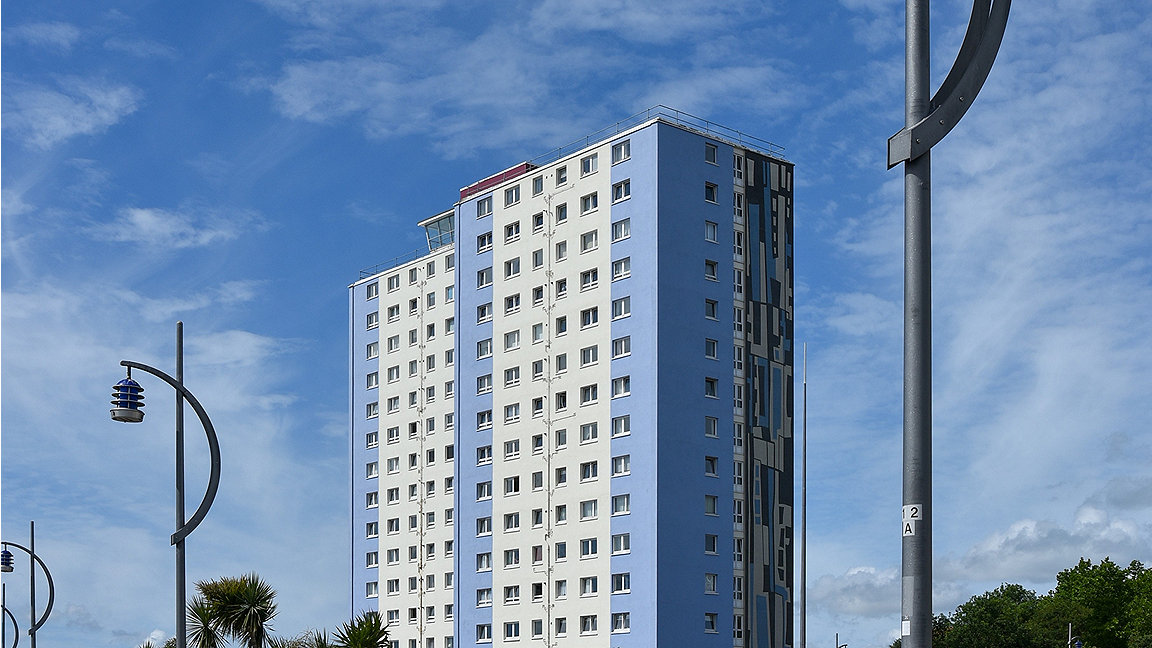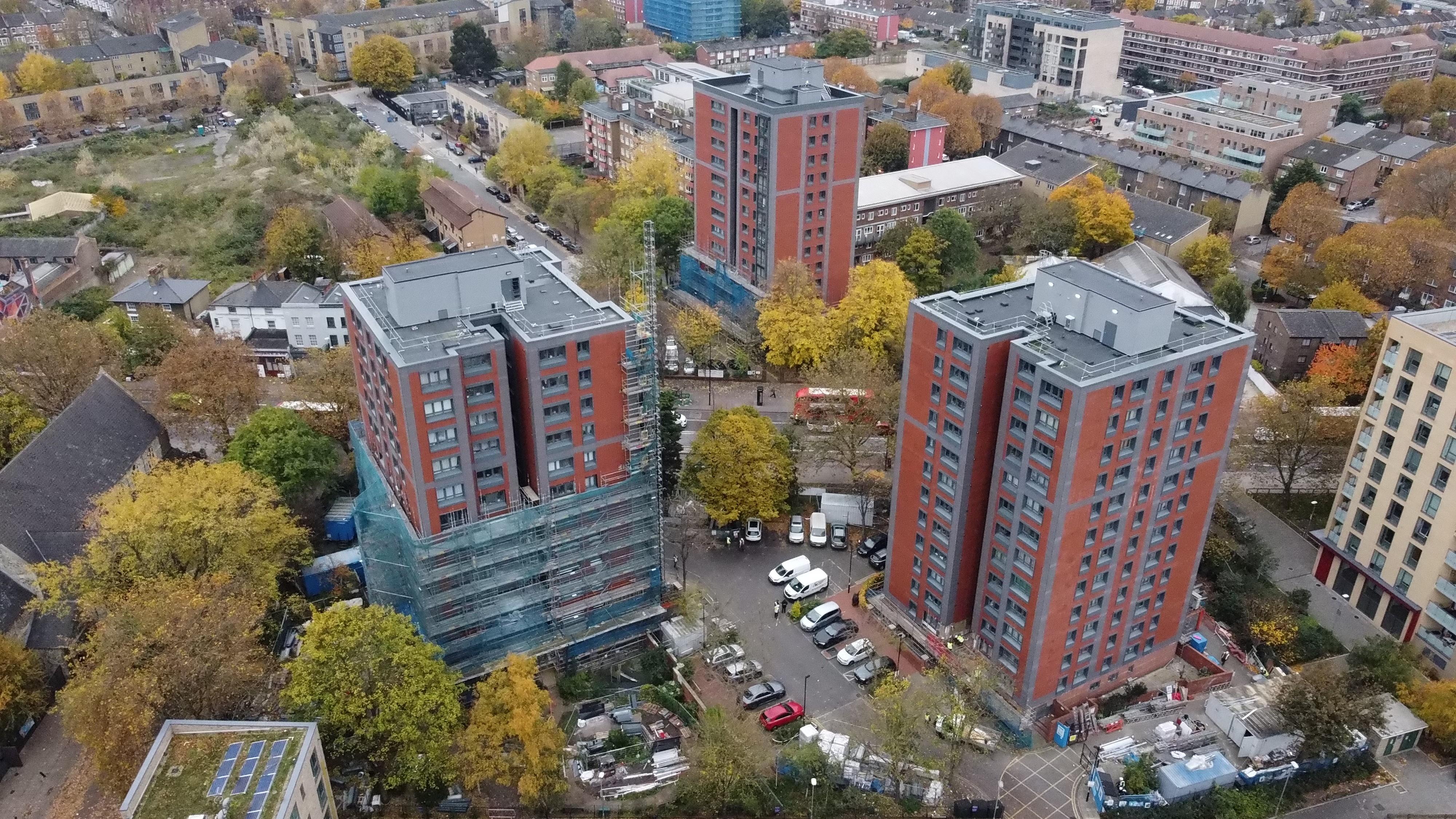
On 14 July, the High Court of England and Wales handed down its first judgment determining a contractor's liability for the replacement of combustible cladding since the Grenfell Tower fire in June 2017.
Martlet Homes Ltd v Mulalley & Co Ltd [2022] EWHC 1813 (TCC) concerned the adequacy of a combustible external wall insulation system that included expanded polystyrene (EPS) boards. Although the system differed from the aluminium composite material used on Grenfell Tower, the judgment sets the tone for how cladding claims are likely to be decided after the tragedy.
Case initially prompted by defects
In 2005, construction firm Mulalley was contracted to design and install an external wall and cladding system for five residential tower blocks in Gosport (known as Gosport Towers), all more than 18m in height. The towers were clad with a StoTherm Classic EPS system, which was commonly specified at the time.
Following the Grenfell Tower fire, developer Martlet Homes undertook to re-examine the adequacy of the cladding that had been installed at Gosport Towers and discovered what it considered to be defects in the installation of the cladding. Deciding to replace it to safeguard the occupants of the development, the developer argued that Mulalley should be liable for the cost of the replacement scheme.
Martlet was also granted permission by the court to add a further claim by way of a late amendment to its case; namely that the StoTherm system had not met applicable fire safety standards at the date of the contract. As well as the cost of the replacement cladding works, Martlet claimed the costs of a waking watch fire safety patrol, which was introduced as a temporary measure until the cladding was removed.
Mulalley denied liability on the basis that the replacement scheme and waking watch were only instigated as a consequence of heightened fire safety concerns following the Grenfell Tower tragedy, and not as a result of non-compliance with the Building Regulations applicable at the time of construction.
The contractor contended that the only work necessary to rectify what it described as relatively minor installation defects would involve cutting out and replacing the fire barriers, fitting additional dowels through the EPS, and re-rendering.
Judge Stephen Davies decided as follows.
-
Martlet succeeded in proving the existence of installation defects.
-
The StoTherm system, despite being certified by the British Board of Agrément (BBA), was found on the balance of probabilities to be deficient. The judge came to this view on the basis that there was no evidence of the system meeting the performance standards in annex A of the 2003 edition of BR 135, in accordance with the test method set by BS 8414-1. There was also no evidence that the system satisfied all of the general and specific design principles found in BR 135.
-
Had Martlet succeeded on the installation defects alone, it would have been entitled to recover only the cost of rectifying these. Having succeeded on the deficiency and breach of specification case as well – that is, the argument added by way of amendment – it was also entitled to recover the higher cost of the replacement scheme.
-
The waking watch costs were recoverable. These were considered not to be too remote (i.e. the court held that the waking watch costs were reasonably foreseeable at the time the parties entered into the contract), and were viewed as a reasonable measure compared with the far greater loss that might have been incurred if the towers had had to be evacuated instead.
Interpreting guidance to determine non-compliance
To elaborate on the second point, the court determined the design of the cladding system was defective, despite the fact it held a BBA certificate as evidence of its compliance with Building Regulations.
The court held that such certificates are not in themselves a guarantee of compliance with the regulations, and are instead nothing more than an aid to demonstrating a material's suitability for a particular purpose.
It also considered guidance from the 2003 edition of BR 135 (fire performance of external thermal insulation for walls of multi-storey buildings). In particular, the court looked at whether a BS8414-1 fire test was required to demonstrate compliance with the Building Regulations, finding that it was.
The reasoning was as follows:
-
Mulalley argued that the applicable Approved Document B at the time the contract was agreed was the 2002 edition. Approved documents provide practical guidance for meeting building safety requirements, and the 2002 edition did not expressly require a successful fire test as evidence of compliance.
-
Part-way through the contract, a 2006 edition of Approved Document B was published, which came into force in April 2007. In a change from the 2002 guidance, this prohibited the use of a combustible insulation system unless a successful fire test had been carried out.
-
The court held that the StoTherm system was sufficiently different in material selection and design from the systems to which BR 135 referred, and thus a BS8414-1 fire test was required to prove the insulation complied with Building Regulations. Since no such test had been carried out, Mulalley was found to have breached its contractual obligation to comply with the 2003 edition of BR 135, and the design was deemed defective.
'The court determined the design of the cladding system was defective, despite the fact it held a BBA certificate as evidence of its compliance with Building Regulations'
Ruling signals tightening requirements
The ruling comes at a time when building and fire safety requirements are being reinforced across England and Wales. This judgment – which some view as quite harsh on the contractor – reflects the political landscape at the moment and the judiciary's keenness to be seen to be tightening up obligations on building and fire safety.
The key points are as follows.
-
BBA certification: Contractors should avoid placing too much reliance on BBA certificates. Although doing so was – and still is – common across the industry, these do not form a guarantee of compliance with Building Regulations. Therefore, contractors must be satisfied any systems or materials being used comply fully with the relevant regulations, regardless of whether they have obtained BBA certification or equivalent.
-
Building Regulations and Approved Document B: Contractors should ensure they keep up to date with changes in Building Regulations and Approved Document B throughout the project. This is likely to be a fast-moving area of law over the coming years. In Martlet, Approved Document B was updated after the works had begun to expressly prohibit the use of combustible insulation unless a fire test had been carried out. There had been no such prohibition under the previous edition, but it seems the later tightening up of requirements influenced the way the previous regime was interpreted.
-
Recovery of waking watch costs: It seems likely that waking watch costs, which in most cases will be significant, will be recoverable where combustible cladding has been installed. Arguments based on remoteness (i.e. that the loss was not reasonably foreseeable or in the contemplation of the parties at the time they entered into the contract) are unlikely to be successful.
David Greenwood is a senior associate at Pinsent Masons
Contact David: Email
Naveed Hanif is a solicitor at Pinsent Masons
Contact Naveed: Email
Related competences include: Building pathology, Fire safety, Legal/regulatory compliance

